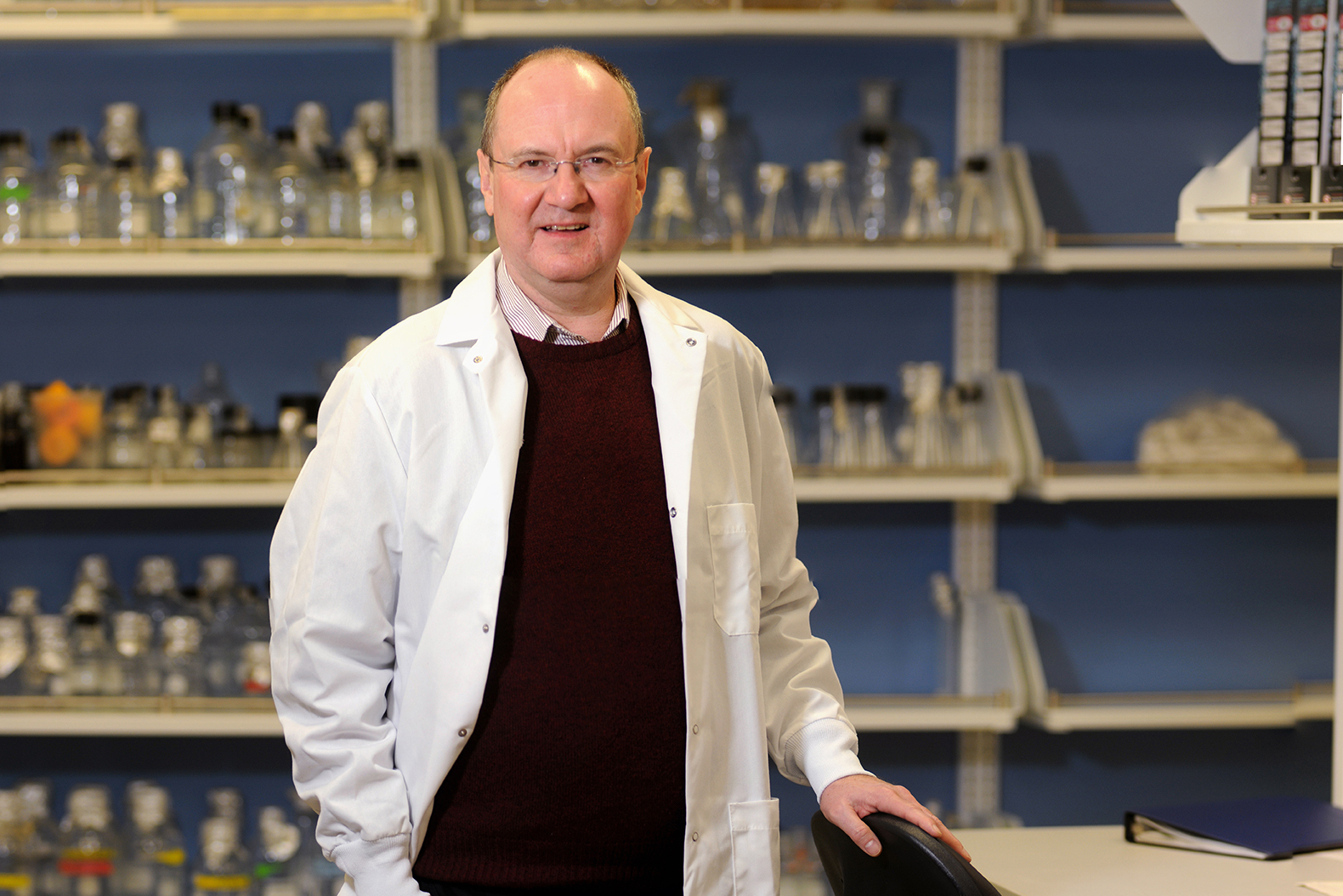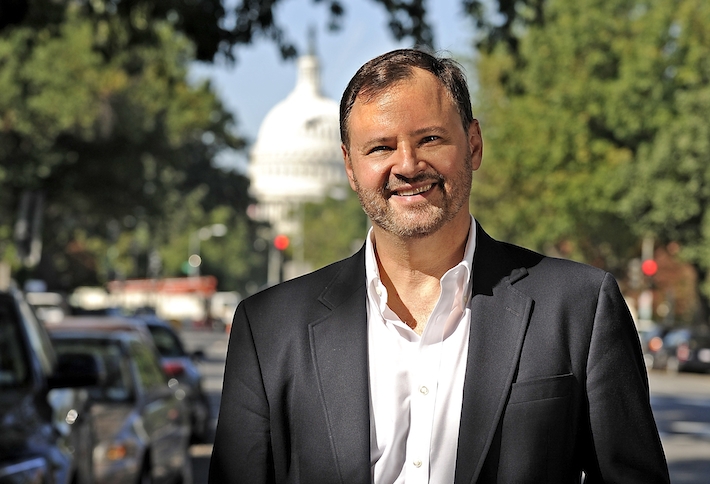Individuals who are exposed to HIV but do not become infected seem to possess a specific immune response to the virus, says a new study from a George Washington University researcher.
The research, co-authored by GW Professor Doug Nixon and published in the Proceedings of the National Academy of Sciences this summer, offers a new biological marker, or measure, for identifying those who are at higher risk of contracting the virus. The discovery also could be a crucial step in developing the first HIV vaccine.
“Some research groups, including my own lab in the past, had detected cells that reacted with the virus in people who were exposed to HIV, but who did not become infected,” said Dr. Nixon, chair of the Department of Microbiology, Immunology and Tropical Medicine in the School of Medicine and Health Sciences. “And that makes you think, well, maybe the body is producing something that is helping to stop that exposure from becoming a systematic infection.”
While anti-HIV immune responses have been documented in the past, scientists had never studied the relationship between the immune system and infection risk in a controlled study.
That changed when Dr. Nixon, along with colleagues from the University of California, San Francisco and Universidade de São Paulo in Brazil, analyzed 564 retroactive blood samples from the Pre-exposure Prophylaxis Initiative (iPrEx) study, published in November 2010 in the New England Journal of Medicine.
The iPrEx study was the first clinical trial to look at whether the antiretroviral medication Truvada could safely prevent HIV infection, a strategy known as Pre-Exposure Prophylaxis (or PrEP). Nearly 3,000 gay men were randomly assigned to take either a placebo or Truvada.
The results of the global study showed that the risk of infection was reduced by 44 percent for the men who took the drug compared to those who took a placebo. Later studies showed that people who took Truvada every single day were nearly 100 percent protected, Dr. Nixon said.
Though the PrEP method is highly successful in preventing HIV when used correctly, its effectiveness requires patients to take a pill each day over an extended period (plus regular office and lab visits), so adherence to the drug remains a challenge. Truvada costs about $1,300 per month without insurance, but most providers cover at least part of the expense. Public health experts have cited various other factors for the low number of users—about 3,200 between 2012 and 2014—including side effects and criticism from some AIDS advocacy groups that widespread use of the drug could contribute to the spread of other STDs.
More than 1.2 million people in the United States are living with HIV, according to the Centers for Disease Control and Prevention. In Washington, D.C., 16,000 residents, or 2.5 percent of the population, are infected—a “severe epidemic” by World Health Organization standards.
A more effective prevention strategy would be to develop a vaccine that could block HIV infection for a lifetime, and that’s where Dr. Nixon is focusing his efforts.
While he was a faculty member at UC San Francisco, Dr. Nixon worked down the hall from Robert Grant, the leader of the 2010 iPrEx trial. Dr. Nixon and his former colleague Peter Kuebler began to think about whether they could use the iPrEx data to answer a different question: Is there anything about the immune system that might predict who is more likely to become infected by HIV?
The researchers tested samples from the iPrEx trial against a variety of HIV antigens to compare the immune system responses of people exposed to the virus with those who went on to become infected.
“That would give us clues as to what potential mechanism might be involved if we did see any relationship between immune cells and protection against infection,” Dr. Nixon said. “And we did.”
They found that the individuals who did not become infected by HIV had T cells (which destroy infections) that responded to a protein found in HIV called viral infectivity factor (Vif). This immune response was present in both the individuals who had taken the Truvada drug and those who had not.
“We don’t know why, but some people who are exposed to HIV make a response against Vif and others do not,” Dr. Nixon said. “And all the people who made that response, except in one case, did not become infected with the virus even though they were continuing to be exposed to it at high rates.”
What does that mean for people who are at high risk of HIV infection? It could help health care professionals screen individuals to find out whether their immune system produces a Vif response. If someone’s blood sample does not respond to the protein, he or she may be even more likely to become infected.
“If we see that someone does not have that protection, then we could intensify behavioral intervention discussions by making recommendations about condom use, for instance,” Dr. Nixon said.
Perhaps more importantly, this immune system response could be mimicked in a future vaccine. To make that determination, other scientists will need to replicate the results of Dr. Nixon’s study and then test it in an animal model.
Though it may be too soon to translate the researchers’ findings into an effective prevention strategy, Dr. Nixon said that identifying a Vif-response in HIV-negative individuals is a promising revelation toward that goal.
“For a very long time, people have been looking for an immunological model that can tell whether a person will become infected or not,” Dr. Nixon said. “And now we have found it.”



